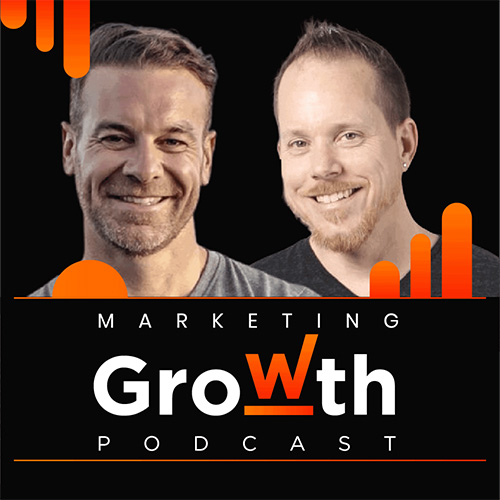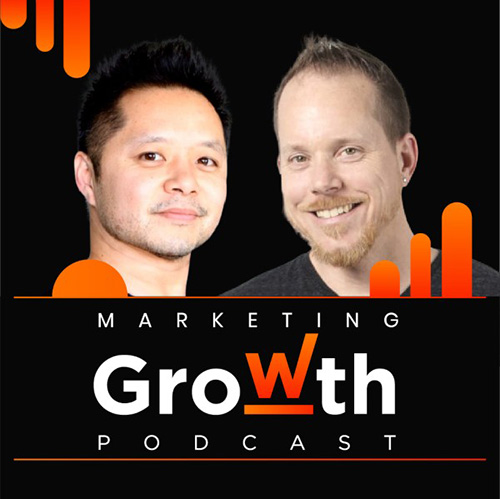Creating high-quality content is an integral part of growing an online business. However, even more important is the promotion of this content. You may have great content, however, if people don't get to see it, you won’t benefit from it.
This is where content amplification comes into play. It's the process of publishing content and then promoting and distributing it further to increase its reach.
Join me as I discuss the importance of content amplification with Chad Pollitt. He is the Vice President and Co-Founder of Relevance, and also serves as the VP of Marketing at inPowered. He is a published author, and he serves as an adjunct professor of digital marketing at the Indiana University Kelley School of Business.
Let's look at why content amplification is so important for succeeding online.
Why is Content Amplification Important?
Over 5 million blog posts are written on a daily basis. In such a huge crowd, it can be challenging to stand out. While unique and high-quality content can help you win the trust of your readers, the most difficult job is that of reaching the right readers. This is where content amplification can help you.
The decreasing organic reach on social media platforms such as Facebook has made it even tougher for you to reach your audience. This has forced business owners to turn towards paid advertising.
By increasing the exposure and reach of your content, you can increase the probability of getting more backlinks. This, in turn, can help improve your website’s SEO. High-quality content and backlinks can help you rank higher up in the Search Engine Results Pages (SERPs). This can get you more traffic, leads, and conversions.
So, essentially, by amplifying your content, you can optimize your SEO, promote your brand, and increase your brand mentions.
Now that you know why content amplification is important, let’s see how we you can do it.
How to Achieve Content Amplification
There are three media formats in which you can do content amplification. They are earned, paid, and owned media. It should be your goal to amplify your content in all of these forms of media.
Chad also mentions that you should figure out what you want to achieve as a marketer. You should determine what results you are expecting to get, such as:
- Increased engagement
- Increased leads
- More sales
- Increased traffic
- Increased conversions
- Increased backlinks
Let’s look at how you can do content amplification in each of these media types.
Owned Media
Owned media includes all of those media properties that are controlled and owned by you. These include things such as your website, social media profiles, and blog. You control these so you can oversee them and create all of the content for them.
The different methods of content amplification for owned media are:
- Email marketing
- Creating high-quality blog posts
- Publishing guest posts
Paid Media
Paid media encompasses all forms of advertising for which you directly pay. These include ads on social media and search engines. Facebook Ads, PPC, and retargeting are examples of this type of media.
To amplify your content in this type of media, you can do the following:
- Facebook Ads
- Instagram Ads
- Promoted Tweets
- Promoted Hashtags
- PPC through Google AdWords
- Influencer marketing
- Promoting content on LinkedIn
Earned Media
Earned media is the sort of media in which you get publicity for free. In this form of advertising, you can reach more people without a lot of effort from your end.
Here are the few forms of content amplification you can do in this form of media:
- Influencer marketing without any payments
- User-generated content
- Press coverage
Among the three, earned media is the one that you practically have no control over it. The entire decision of amplifying your content is dependent on others. In paid and owned media, all of the choices are up to you.
Let’s look at a few strategies for content amplification.
1. Amplify Your Best Content
Make sure that you amplify only your best content. Your best content has the best potential to grab people’s attention. You need to make sure that your content stands out from your competition.
Using content which isn’t up to the mark can, in fact, spoil your reputation. You need to showcase the best of what you’ve got so that those who see the content will naturally feel like promoting it further.
2. Utilize Influencer Marketing
Influencer marketing is a brilliant way of amplifying your content. In fact, as many as 92% of marketers believe that influencer marketing is effective. When you collaborate with influencers, you get direct access to their audiences. Their audiences are usually highly-engaged and follow their recommendations seriously.
The influencers will link to your content so their backlinks will also help improve your link profile. Additionally, some of their followers may link to your content or share it. This can further help spread the word about your brand and improve your link profile.
You may need to pay a fee to influencers to have them promote your brand. Some influencers may work on a barter basis.
3. Leverage Remarketing
One of the best ways of marketing your products is remarketing. You can use this feature for your PPC ads or social media ads. This method of marketing involves promoting your brand again to consumers who have shown interest in the past.
You can use targeting tools to further refine the target audience in the group you’re remarketing to. This can help improve your conversion rates.
Final Thoughts
Publishing great content is not enough anymore. You also need to promote and amplify it. Through paid, earned, and owned media, you can distribute your content across the internet.
You can use remarketing, influencer marketing, and content amplification to improve your brand’s reach and increase conversions. If you have any doubts regarding content amplification, you can reach out to me to discuss.

Shane Barker is a digital marketing consultant who specializes in influencer marketing, product launches, sales funnels, targeted traffic, and website conversions. He has consulted with Fortune 500 companies, influencers with digital products, and a number of A-List celebrities.







